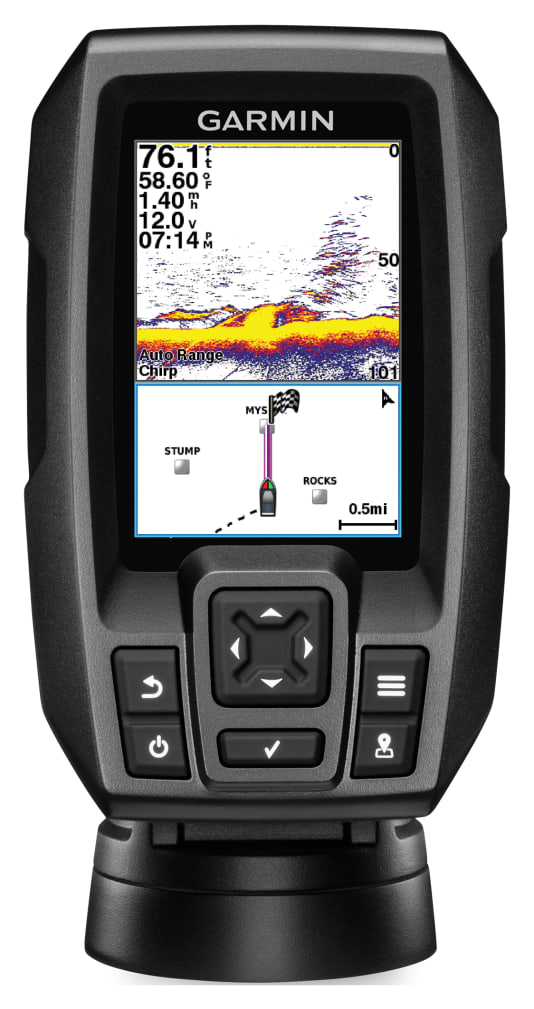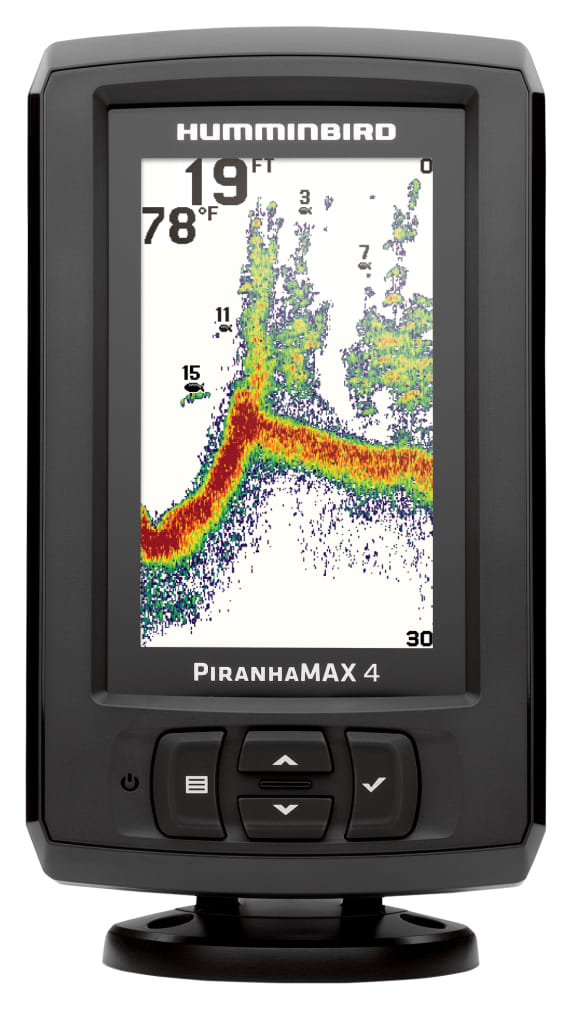If you had asked me 5 years ago about Humminbird vs Lowrance, I would’ve picked Humminbird every day of the week due to their more advanced sonar technologies. But these have closed in recent years to the point where all three large manufacturers of fish finders are comparable.
| Brand | Humminbird | Lowrance |
| Display | ⭐⭐⭐⭐⭐ | ⭐⭐⭐⭐⭐ |
| Model Options | ⭐⭐⭐⭐⭐ | ⭐⭐⭐⭐⭐ |
| Connectivity | ⭐⭐⭐⭐ | ⭐⭐⭐⭐ |
| Sonar | ⭐⭐⭐⭐⭐ | ⭐⭐⭐ |
| Performance | ⭐⭐⭐⭐⭐ | ⭐⭐⭐⭐⭐ |
| User Friendliness | ⭐⭐⭐ | ⭐⭐⭐⭐ |
Selecting a fish finder can be one of the most expensive decisions any angler can make. Over the last decade there have been huge advantages in fish finder technologies – I am always astounded at how clear the pictures show the bottom. I often send screenshots to my family, explaining that the picture is sonar and not underwater photography.

Table of Contents
Humminbird Overview
Humminbird first began in 1971 as Techsonic Industries but has always been focused on fishing technology. They continually research and develop new improvements that are rolled out to anglers, including mapping functions like LakeMaster and CoastMaster, as well as integration with Minn Kota trolling motors.
Humminbird are based in Eufaula, Alabama and conducts all design, engineering, manufacturing, and support from the US.
Some of Humminbird’s most popular models include:
- Humminbird PiranhaMax
- Humminbird Solix
- Humminbird Helix
- Humminbird ICE
Lowrance Overview
Lowrance is one of the oldest names in the fishing industry regarding electronics. Established in 1957, this brand has been at the forefront of marine technology since its inception. The company produced some of the best sonar fish finders for many years and has more recently adapted to include such capabilities as side imaging technology, known as StructureScan and down imaging, referred to as DownScan.
One thing you can be certain of when it comes to Lowrance is that the screen size is usually never an issue. Lowrance fish finders have long been known for having bigger screens than their competitors and professional anglers generally prefer them for that reason.
Some of Lowrance’s most popular models include:
- Lowrance Elite
- Lowrance Hook
- Lowrance HDS
Humminbird vs Lowrance Fish Finders
I would generally say that Humminbird have better sonar technologies than Lowrance. Case and point is the MEGA 360 imaging which I wouldn’t leave home without. However, Lowrance fish finders have come a long way over the last decade to the point where they are not far behind.
Lowrance’s main advantage is the sheer number of models. They have created a wider range of products, so you are more likely to find a product that suits your needs – especially if you have more specialized requirements than most.
Humminbird PiranhaMax 4 vs Lowrance Hook2 4X
The first comparison is between the most popular products of the Hook 4X and PiranhaMax 4. They are both entry-level options that could be used for kayak fishing. They are relatively simple to operate and will give you the most basic information to help improve your fishing.
Lowrance Elite vs Humminbird Helix
The next comparison is looking at the more high-end range in the Lowrance Elite and Humminbird Helix. These both have more advanced sonar with side scan and down scan as well as detailed mapping options available. They have high-definition touch screens and split view options that are suitable for the most experienced pro anglers.
Display
Lowrance has a reputation for larger displays than the other two brands. They are all great displays with high-definition touch screens, especially in the premium models. They are also large enough for split display functionality which is extremely useful.
Both companies also have a wide range of displays in different models, so you can find the option that suits your needs.
User Friendliness
The three manufacturers in Humminbird, Lowrance, and Garmin have all closed the gap in terms of overall quality over the last decade. So a trend has grown towards sticking with the operating system you are used to. The advantages in switching brands are not so great to justify the time spent learning their different features and terminology.
I do prefer Lowrance in terms of simplicity in use. Humminbird have a reputation for being difficult to set up initially. I think this is partly due to the sheer number of features. You have to learn how to use and read all of them.
Features
The list of features in Humminbird fish finders is extensive and unmatched by Lowrance. They have so many different types of sonar (dual spectrum CHIRP, side imaging, down imaging, mega 360), plus mapping cards, as well as SmartStrike, that it is difficult to remember them all when you are on the water.
SmartStrike is Humminbird’s black box algorithm that uses the weather, temperature, target species, depths, and contours to predict which GPS locations are the most likely to hold fish. I am not yet sold on whether this is genuinely a game changer, but I will take all the help I can get.
Lowrance has also introduced ActiveTarget Sonar which is a great addition to show you exactly what is underneath your boat. It is different to the Mega 360, but can be used at the same time for different purposes.
Lowrance has also gotten a great mapping system with Navionics that has really boosted the quality of their GPS waypoints.
Connectivity
Most fish finder units are very similar in terms of connectivity. They all have Bluetooth capability to connect with your smartphone. This helps you to review your GPS waypoints and take a closer look at any key metrics. It also frees up your fish finder display to keep functioning while you review some separate features on your phone.
The high-end models can also connect to your electric trolling motors so you can control to specific GPS waypoints automatically. This is as close to magic compared to the technology of a decade or two ago.
I will say that I have had some trouble with initially connecting Humminbird fish finders to trolling motors and other tools in their initial set-up. Once it is all connected, it works perfectly, but I would suggest scheduling yourself a free afternoon on dry land to make sure everything it working before you head out to sea.
Conclusion
I have been a Humminbird fanboy for a long time and justifiably so due to their wide range of features and superior sonar, but this advantage has dropped over time. It has come to the point where Humminbird, Garmin, and Lowrance are all within a whisker of each other in terms of technology and features. The new rule of thumb is to stick with the operating system that you already know, because the grass isn’t always greener on the other side.




